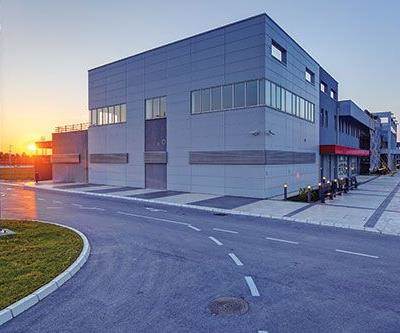The Bottom Line: A Method to the Tax Madness
Every shop must adopt a method of accounting for activities within its business, and cash and accrual methods are two commonly used ones.
Businesses must recognize revenue when it is received, and expenditures when they are paid or incurred. But for mold builders, what does when really mean? To answer that question, a shop must first adopt a method of accounting for its business, or for a particular activity within its business. Cash and accrual methods are two commonly used ones. The cash method recognizes revenue when the cash is received and expenditures when the cash is paid, while the accrual method recognizes revenue when it is earned, and expenditures when they are fixed and determinable.
While accrual and cash methods are basic accounting principles, they get complicated once the Internal Revenue Code and related Treasury regulations specify the method, manner and timing of recognition for specific industries or activities. With limited exceptions, businesses within the manufacturing sector must use the accrual method of accounting, which means they capitalize the costs of materials, labor and overhead into a “finished goods” inventory account. When the manufacturer sells its finished goods, its inventory is reduced by the cost of goods sold.
However, this is not necessarily the case with long-term contracts of custom manufacturers of unique products, and mold builders are definitely developing and manufacturing custom, novel, unique, one-of-a-kind tools. For example, a mold design may be uncertain at the beginning of a contract, so the mold builder must develop a mold design, experiment with the variables of that design and then produce the mold to meet customer specifications. This is why many mold builders qualify for the research tax credit (see last month’s column). So, when do mold builders recognize revenue and expenditures associated with the development and manufacture of a tool? Well, like most answers in tax law, it depends.
Long-term contracts. In order for a mold builder to determine the proper method of accounting, it must first determine whether any of its contracts (projects) are long-term. A project is long-term if it isn’t completed in the tax year in which the contract was entered into, and it involves the manufacture of any unique item of a type that is not normally carried in the manufacturer’s finished goods inventory or any item that normally requires more than 12 calendar months to complete. “Unique” means that the item is designed for the needs of a specific customer. Since many, if not all, molds are custom, novel, one-of-a-kind tools, they certainly meet the definition of unique. As such, mold builders may be subject to the long-term contract accounting rules for any contract that spans two tax years or is complex enough that the project is expected to last more than 12 months.
For example, assume a mold builder with a December 31 year-end begins to work on a project to build a one-of-a-kind tool on December 5, 2015, and delivers the mold on March 14, 2016. The contract, which lasted 100 days, is determined to be a long-term contract, since the project did not begin and end within the same tax year, and the tool is unique.
Once the mold builder has determined that it has a long-term manufacturing contract, it must use the percentage of completion method of accounting for the long-term contract’s income unless an exception applies. (For instance, an item is not considered unique if it normally requires 90 days or fewer to complete, therefore, this eliminates the requirement to use this method of accounting.) Under the percentage of completion method of accounting, a company is generally required to recognize a percentage of the total contract price as revenue. This percentage is determined by calculating the ratio of the total cumulative costs allocable to the project in proportion to the total costs estimated to be allocable to the project. For example, if a tool builder with a December 31 year-end has incurred 60 percent of the total estimated costs to build a mold by December 31, 2015, it must recognize 60 percent of the revenue associated with the tool on its 2015 income tax return.
Short-term contracts. While most molds developed and manufactured by a mold builder are unique, many projects begin and end in the same year. These short-term contracts should be accounted for under the shop’s general method of accounting, which is typically the accrual method of accounting for mold builders. So, for the short-term contracts, mold builders will recognize revenue when earned and the expenditures when fixed and determinable.
Other methods impacting tax returns. As noted earlier, mold builders’ overall method of accounting will likely be the accrual method. However, complexity commences when addressing specific line items on a tax return, and these methods are not just limited to the timing at which the shop recognizes its revenue or contract-specific expenditures. For example, a shop must have a method for everything from how they capitalize overhead expenses into inventory to how they account for research expenditures to how they account for repairs and improvements to tangible property.
The process of evaluating accounting methods can be very complex, so mold builders need to ensure they are using the most advantageous method while staying within the letter of the law. While this article discusses the general rules for method of accounting for tool builders, the Internal Revenue Code and related Treasury regulations are full of exceptions. Mold builders must review their method of accounting periodically to ensure they are computing the proper amount of income tax associated with their manufacturing activities.
Related Content
Think Safety: Eliminate Hazards Throughout the Shop
The tooling community is taking advantage of new products for safer mold shops and molding facilities.
Read MoreMold Design Review: The Complete Checklist
Gerardo (Jerry) Miranda III, former global tooling manager for Oakley sunglasses, reshares his complete mold design checklist, an essential part of the product time and cost-to-market process.
Read MoreEditorial Guidelines: Editorial Advisory Board
The Editorial Advisory Board of MoldMaking Technology is made up of authorities with expertise within their respective business, industry, technology and profession. Their role is to advise on timely issues, trends, advances in the field, offer editorial thought and direction, review and comment on specific articles and generally act as a sounding board and a conscience for the publication.
Read MoreTackling a Mold Designer Shortage
Survey findings reveal a shortage of skilled mold designers and engineers in the moldmaking community, calling for intervention through educational programs and exploration of training alternatives while seeking input from those who have addressed the issue successfully.
Read MoreRead Next
New Property Regulations - Capitalization vs. Expense
Federal and state income tax compliance can be a burden for mold builders. The tax code and related guidance changes daily, creating both opportunities and exposure. This series aims to provide industry-specific guidance to help mold builders minimize these burdens within the letter of the law.
Read MoreAre You a Moldmaker Considering 3D Printing? Consider the 3D Printing Workshop at NPE2024
Presentations will cover 3D printing for mold tooling, material innovation, product development, bridge production and full-scale, high-volume additive manufacturing.
Read MoreHow to Use Continuing Education to Remain Competitive in Moldmaking
Continued training helps moldmakers make tooling decisions and properly use the latest cutting tool to efficiently machine high-quality molds.
Read More




















